HOW TO REDUCE BELLY FAT
September 18, 2012 by admin
Filed under Tips for Ayurveda
How can we get relieved of that excess fat that makes us look out of shape.This is a problem across the globe.
According to ayurveda, belly fat is caused due to a number of reasons which cause an increase in the kapha dosha. Lack of exercise, sleeping in the afternoons, and an unhealthy diet and lifestyle can collectively lead to this state. There are many ways to lose belly fat with ayurveda which are based upon diet and lifestyle regulations.
That’s linked to a greater chance of developing high blood pressure, type 2 diabetes, heart disease, dementia, and certain cancers (including breast cancer and colon cancer.)
TIPS FOR REDUCING BELLY FAT:
- Avoid sweets, sweetened drinks, carbohydrate and oil rich foods which increases kapha.
- Minimize salt intake and milk based products such as ice-creams and butter.
- Consume more of wheat based products. Minimize on rice products.
- Increase the intake of fibers in your diet. Fibre food makes you feel fuller.
- Drink a glass of warm water when you get up. This is very effective for reducing belly fat.
- Use a lot of cinnamon, ginger and pepper in your cooking.
- Consume one teaspoon of honey with a cup of tea to aid weight loss.
Ayurvedic practitioners suggest that one must consume two fruits in the morning and one fruit every evening to reduce belly fat.
Losing extra fat from the body is not at all an easy job. It requires a strict diet plan along with various fat burning exercises. Generally all forms of exercise burn fat, but some are more effective than others.
 Fat burning exercises are one of the ways to lose weight. The intensity of these exercises depends on how high you have set your weight loss goal. The intensity of your fat burning workouts would depend on your current health and capacity for physical exertion. Some of the fat burning exercises are:
Fat burning exercises are one of the ways to lose weight. The intensity of these exercises depends on how high you have set your weight loss goal. The intensity of your fat burning workouts would depend on your current health and capacity for physical exertion. Some of the fat burning exercises are:
Walking – Walking is a very easy way to burn that excess fat from your body. You can increase the intensity to burn more calories. This can be done by walking faster, covering long distances or doing short distances for an extended period of time. Walking can increase your fitness level too.
Jogging– This is a great cardiovascular exercise with multiple benefits. It not only help you to burn calories but also tones your legs, thighs and calf muscles; thereby giving you a shapely body. Jogging enables you to get rid of more fats in lesser time.
Biking or cycling– Cycling either indoors on a machine or outdoors is an excellent cardio activity. Variation in intensity can drastically alter the amount of calories burned. In general, you can burn anywhere from 200 to 400 calories per half-hour.
Sit ups: It is another good fat burning exercise that directly burns the fat around your stomach, the area from which losing weight is most difficult. Five to ten sets of sit-ups everyday is a great way to tone your stomach.
Swimming – Swimming makes you lightweight, as it is a minimal resistance and low impact fat burning exercise. Try to incorporate swimming in your daily routine for fast fat loss.
Side bends– Apart from toning your body and stomach, it is also essential to focus on the side parts of the stomach, so that fat gets reduced equally from all sides. Side bend exercises help in burning the fats deposited on the side of your stomach.
By following these fat burning exercises religiously complemented with a sensible meal plan, you can burn your fat drastically.
4 basic points to avoid belly fat. Good exercise, Good diet, Good sleep and avoid stress. You will be amazed to see the results with better lifestyle.
SKIN CARE AND HOME REMEDIES FOR GLOWING SKIN
September 18, 2012 by admin
Filed under Tips for Ayurveda
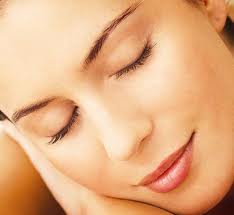 Nothing makes a person more beautiful than healthy glowing skin. Natural home remedies offer a variety of unique treatments that work besides those offered by major department stores.
Nothing makes a person more beautiful than healthy glowing skin. Natural home remedies offer a variety of unique treatments that work besides those offered by major department stores.
An Ayurvedic skin care regimen includes procedures for cleansing, toning, exfoliating, and moisturizing the skin. Ayurveda also has special formulas to help with specific skin care problems, such as eye treatments and special techniques for facial massage.
If the skin is not cared properly and neglected it suffers from premature aging, becomes dull and blemished. Regular consumption of milk, honey and yogurt are good nourishment for skin and prevents premature aging.
Important Habits to Get Glowing Skin
Few important habits that one would need to inculcate in the daily routine life to get a smooth, flawless glowing skin.
- Cleanse the skin at least twice a day with a mild cleanser.
- Complete body exercise shows up an attractive healthy glow on face. Gymming or yoga on a daily basis is essential for beautiful skin.
- Have a good night’s sleep for at least eight hours at night.
- Expose skin to sunlight for at least 15 mins a day that too without any UV protection.
- Drink loads to water, i.e. 10-12 glasses a day.
- Mix equal quantities of cucumber juice, rose water and lime juice. Wash the face and apply it overnight. Rinse off in the morning. This clears the complexion and keeps it healthy.
- Take 50 ml. of tomato juice and mix with one teaspoon of lemon juice. Apply this mixture to the face. It helps to make the skin soft and glowing.
- Take equal quantities of turmeric powder and wheat flour and make a paste with sesame oil. Apply it to the face to remove unwanted hair.
- Apply orange juice to the face for smooth and soft skin.
- Take 30 ml. of cabbage juice and mix one teaspoon of honey in it. This mixture, if applied regularly to the face, helps to keep the wrinkles away.
- Make a paste of raw carrots and apply it to the face. Wash it after one hour. The skin will become glowing.
High levels of emotional and mental stress is one of the major reasons for skin getting dehydrated. Meditation and breathing are effective stress busters. To remove stress do this exercise- yogic breathing, follow these steps:
- lie on your back or seat comfortably
- place one palm on your belly, and another one on your chest.
- start inhaling into your belly, letting it slightly rise, then keep inhaling into your ribs, expanding the ribcage up and out, letting the air completely fill up your lungs by inhaling all the way up into your chest.
- mentally keep track of your breathing — your belly, ribs, and chest.
- on your exhales, let the air move in the opposite order — chest, ribs and belly sinking in.
Do this simple yet very effective breathing technique for 5-10 minutes when you need to calm down whether it is before an important meeting or right before you fall asleep.
Ayurvedic Beauty and Skin Care Tips
Try the following ayurvedic suggestions to get beautiful results you desire: Here are some simple home remedies which can be tried using easily accessible and other ingredients available in your kitchen cabinet
Wrinkle-free Soft Skin: Smooth castor oil on the face to keep it soft and wrinkle free.
Clear Skin and Pores: Clean the skin and pores with unpasteurized milk on cotton wool.
Natural Moisturizer: Make your own moisturizer for normal skin. Mix eight ounces of yogurt with a tablespoon of both lemon juice and orange juice to use on the face as a mask. Remove with damp cloth in about fifteen minutes.
Skin Conditioner: To condition the skin, make a paste of two tablespoonfuls of cream stirred with one of honey. Leave mixture on skin for five minutes and remove with a wet facial cloth.
Skin Tone and Pigmentation: A raw potato rubbed on the skin helps lighten pigmentation problems and improves skin tone.
Natural Mask and Mixtures: It is possible to make a powerful mask by mixing turmeric powder, milk, and sandalwood powder. Leave this mixture on the face for several minutes and remove with water to give the skin vibrancy. It improves skin complexion.
Smooth Complexion: Apply orange juice to the face for a smoother complexion.
Facial Hair: Remove facial hair with an application of sesame oil, turmeric powder, and wheat flour in equal proportions.
Treat dark circles under the eyes: Take cucumber juice and rub it on your face for some time. Wait for few minutes and wash your face with cold water. It is a good skin care remedy for treating spots and marks on skin and getting clear and glowing skin. It also proves effective to treat dark circles and dull skin.
Skin moisturizer: Once a week apply coconut oil on the entire body so that the skin is hydrated. You can do this 15-20 minutes prior to bath.
Treat skin problems like acne and pimples: Apply on your face paste of neem, mint and tulsi leaves. Wash with tulsi water . Do this regularly to note the change in skin.
Natural Sunscreen Lotion: Combine rose water with glycerin and cucumber juice. Refrigerate and apply this mixture before sun exposure each day.
Natural Face pack: A mixture of besan or gram flour, milk and turmeric powder is used as a natural face pack. It helps to deal with oily skin and get a flawless and beautiful glow on your skin. Many people use this mixture while bathing their children also.
Glowing skin: A quick remedy for glowing skin instantly . Put few drops of moisturizer or malai on a cube of ice. Massage your face with this cube for 4-5 minutes. You can try this remedy during winters when your skin becomes very dry and scaly. This remedy can also be used when you are feeling tired and dull to get quickly refreshed.
If your skin is dry, use curd. You can massage your skin with curd at least once in fifteen days. It will help you to get rid of dry skin as well as get glowing skin with an ease.
If your skin is oily use ripe papaya as a beauty and skin care remedy. Churn ripe papaya into a thick paste. Apply this paste on your skin and massage slowly for few seconds. Use clean and cold water to wash your face after 10 -15 minutes. Wipe your face with a soft dry towel. Try this remedy once in every two weeks to get a refreshing look and glowing skin.
Special care during summer:
Mix honey with some lemon juice and make a paste out of it. Apply this paste evenly on your facial skin. You can also use this paste on your hands, legs, neck and back. Let this pack stay on your skin for at least 5-10 minutes before you wash your face. This remedy will help you to get soft and glowing skin in minutes. It also acts as a substitute for skin bleach and helps to deal with oily skin. You can use this remedy during summers when skin tends to become oily quite often.
During summer when you come home during peak hours , apply a paste of rice flour and milk on the exposed areas of your body i.e hands, legs, face, neck. Leave for 5 mins and then wash with cold water. Skin coloration will be reduced.
Special care during winter:
In Winter season, right after a bath while the skin is still wet, rub some Baby oil into the skin gently to avoid dryness.
Mix 1 teaspoon Vaseline with 1 teaspoon Glycerin and leave overnight. This is good for dry skin and also during winter season.
Mix 1 teaspoon of Vaseline with 1 teaspoon of Vitamin E oil and 1 teaspoon of Glycerin and apply over the entire body. Have a bath after an hour repeat this for a week or two.
NATURE has the products which can best keep you beautiful, and the traditional potions prescribed by ayurveda use many of them in their most basic forms.
IMPORTANCE OF SIX TASTES IN AYURVEDIC DIET
September 17, 2012 by admin
Filed under Featured, Tips for Ayurveda
Ayurvedic diet doesn’t mean eating only legumes, rice and vegetables. Know your dosha type ( Vata, Pitta and Kapha) and balance the food intake by making right choices and decisions.
Ayurveda recognizes six tastes and it’s quite important to have all of these 6 tastes in your diet every day. The six tastes are:
- Sweet – sugar, honey, rice, pasta (made from the dough of wheat rava/semolina), milk, etc.
- Sour – lemons, hard cheese, yogurt(curd), vinegar, etc.
- Salty – salt, any salty food
- Pungent – chili peppers, red chilli , ginger, any hot spice
- Bitter – leafy greens, turmeric, lettuce (salad leaves),bitter gourd etc.
- Astringent – pomegranate, beans, lentils (dhals), etc.
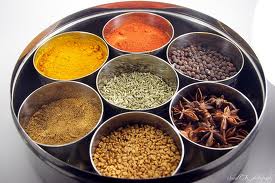 These six tastes are listed in the order they are digested in your body.
These six tastes are listed in the order they are digested in your body.
The pattern in Indian meals is that we start the course with starters, salads, main course and then dessert / sweet dish or fruit. Common observation is that in Indian meals we have a reverse pattern – salad is taken in the beginning and sweet dish at the end of the meal. Ayurveda Diet has a very holistic-medicine-point of view on diet.
Including all six tastes in your diet contributes to feeling satisfied at the end of a meal. Cravings are often caused by not having all of the six tastes in your daily diet. Many people often omit the bitter and astringent tastes (don’t be one of them!). When you have something bitter or astringent at the end of a meal, it actually reduces your desire for sweets.
Including all six tastes is a great way to incorporate Ayurvedic diet into your lifestyle and at the same time improve your health (not to mention a great way to shed off some pounds-effortlessly).
“You are what you eat” is a saying that you have probably heard before. It holds true not only on the physical but also on the psychological level.
Ayurveda recommends that food should be taken fresh (without pesticides, additives and other chemicals), seasonal, and as often as possible local. Fresh doesn’t, however, mean raw. The best are freshly cooked, whole meals.
You can make a good start when you know what is healthy food . Cook more with fresh produce and start playing with some basic Ayurvedic spices, such as turmeric, ginger, cumin and coriander. No matter what you cook, you can almost always add these spices to your dish. Not only are those excellent flavor and digestion enhancers, but they also have many medicinal properties.
Some right choices you can make while eating out: drink warm water instead of cold water, it enhances digestion. Similarly it is better to have a warm soup than going for ice cold salad during start uo of a meal course.
Eat only when you are hungry, but when you are not don’t eat. Although this seems over simplistic, this practice is the key to conquering most cases of obesity.
Eat light meals , include ginger tea – two times a day and stay healthy!!
AYURVEDIC DIET
September 17, 2012 by admin
Filed under Benefits And Effects of Ayurveda
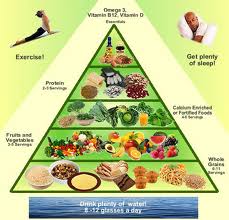 Ayurveda has its roots in India, dating back to about five thousand years. Essentially, it is a science that encompasses the health benefits of herbs, meditation, yoga, and massage. Ayurveda is based on the principle that every being on this earth, be it animate or inanimate, is the outcome of five basic elements of nature, or Pancha Mahabhootas – Water, Air, Fire or Energy, Earth and Ether (space) . Ayurveda embodies the methods that help to achieve a balance between the body, mind and soul, which is absolutely crucial to stay in unison with nature.
Ayurveda has its roots in India, dating back to about five thousand years. Essentially, it is a science that encompasses the health benefits of herbs, meditation, yoga, and massage. Ayurveda is based on the principle that every being on this earth, be it animate or inanimate, is the outcome of five basic elements of nature, or Pancha Mahabhootas – Water, Air, Fire or Energy, Earth and Ether (space) . Ayurveda embodies the methods that help to achieve a balance between the body, mind and soul, which is absolutely crucial to stay in unison with nature.
Ayurvedic Diet and Nutrition
According to Ayurveda, ‘We are what we eat’!. This ancient branch of science believes most of the common ailments are a result of poor nutrition. Ayurvedic nutrition is concerned importantly with the dietary requirements of individuals. Any anomaly in the body is thought to emanate in the digestive system, and therefore it become crucial not to cast aside even minor digestive complaints, as it could be indicative of a disease.
Ayurveda does not distinguish between food and medicine, the underlying belief that the absence of nutritive food or diet causes disease in the body. This can only be remedied with appropriate food, which becomes the medicine to heal the body of its ailment. All the same, Ayurveda holds sacrosanct, that each one of us are distinct, and our health is determined by our attitude and response to the conscious and unconscious inputs in life that one is subjected to.
Ayurvedic diet is centered on treating life’s experiences as ‘food’ (for the body and the mind), which is assimilated into the body and contributes to its nourishment. This transformation of ‘food’ into nutrition is termed as ‘Agni’ or fire, which forms the edifice upon which the Ayurvedic system is built.
Spices and herbs form an integral part of Ayurvedic healing, mainly because of its power to be easily absorbed in the body. On the one hand, this enhances the digestive capacity of the body and on the other, cleanses it of its toxins, ensuring the cells in the body are empowered with the nutrition available in the diet. Ayurveda recommends that spices be consumed only after they are cooked.
An Ayurvedic diet is rich in vegetables, fruits, whole grains and fibrous food, which contribute to keeping the body energetic, glowing and in good health. An Ayurvedic diet is miserly with salt to prevent potential fluid retention and also discourages the intake of coffee, sodas and alcohol.
Benefits of an Ayurvedic diet
- Ayurvedic diet is low in fat and helps to maintain an optimum body weight.
- Ayurvedic diet is endowed with minerals that charge the body with energy and radiance.
- Ayurvedic diet is rich in vegetable proteins that are quickly digested and assimilated into the body.
- Ayurvedic meals are easy to digest due to the inclusion of spices – garlic, ginger, cumin, red chilli and black pepper.
- Fresh organic foods that Ayurveda relies upon, are high on nutrition, and endow the body with strength and vitality.
Meditation to heal our life 1st Edition 
Tips for adopting Ayurvedic Lifestyle
- The most important thing is to eat your main meal at noon, when the sun is strongest and the digestive fire reflects that strength. If you eat too much at night, or eat heavy foods such as meat or cheese then, the food will sit in your stomach and create AMA( uncooked or undigested food) Eat light at night and your food will be easily digested before you go to sleep.
- It’s also important to eat all three meals at the scheduled time every day. If your body gets used to a regular routine, the digestive juices will start to ready themselves before the meal, and will be more efficient in digesting. If you eat at all different times, your digestion will be thrown off.
- Don’t snack between meals unless you are actually hungry, and wait until the food is digested before eating a meal. If your digestion is already occupied with digesting and you add new food on top of that, the result is AMA, the sour, undigested waste product of undigested food.
- Exception for diabetic paients as they can have small snacks every two hours to avoid acidity.
- Planning the other aspects of the ayurvedic routine are also important. Going to sleep before 10 pm. is essential, because then during the Pitta time of night (10 pm-2 am) your digestion has a chance to cleanse and rejuvenate itself. If you stay up, you’ll probably feel hungry about midnight and will want to eat, which will tax the digestion and create AMA.
- Waking up before 6 am. is recommended. Basic reason you will feel tired if you sleep late into the Kapha time of the morning (6-10 am.), the channels of your body will become clogged with AMA.
- Daily exercise that is suitable for your body type will stimulate digestion and help cleanse the body of toxins. It’s also important to manage your stress, and to have a job that your enjoy and is not too taxing for your body type. Everyone can benefit from spending time each day practicing yoga, meditation program to remove mental, emotional and physical stress.
BENEFITS OF AYURVEDA
September 17, 2012 by admin
Filed under Benefits And Effects of Ayurveda, Featured
Ayurveda is a holistic system of medical science and is the oldest healing science which is almost 5000 years old. Ayurveda contains two Sanskrit words: Ayu which means life or lifespan and Veda meaning knowledge (The Science of Life). Ayurveda, Indian holistic medical system is based upon the universal natural law of balancing the five elements (ether, air, fire, water and earth) that make up the physical body. When there is an imbalance in any of the dosha , it will result in illness and has to be addressed by treatment.
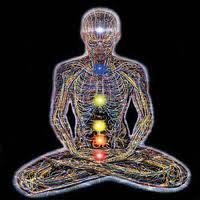
The aim of Ayurveda is to prevent illness and enhance wellness. Ayurveda stresses on proper diet for maintaining good health and treating disease. Ayurveda ensures balance of body, mind and spirit.
Ayurveda is based on the principle of helping the body’s inherent ability to heal itself. There are some fundamental principles of good health and longevity of life in this system of medicine and lifestyle management. Moreover, you can get a cure for the diseases with some easily available herbs, many of which are found in your homes.
Benefits of Ayurvedic Medicines
- The Ayurvedic approach to an illness is holistic and therefore after an Ayurvedic treatment a person will find an improvement in their physical, mental and psychological conditions.
- By using ayurvedic and herbal medicines you ensure physical and mental health without side effects. The natural ingredients of herbs help bring “arogya” to human body and mind. (“Arogya” means free from diseases).
- Ayurvedic practitioners have identified a number of medicinal preparations and surgical procedures for curing various ailments and diseases, not completely curable in other systems.
- Ayurveda not only helps in treating diseases but also in preventing the occurrence of diseases.
- Ayurvedic medicines are good even for healthy people since they are restorative in nature and helps in nourishing the body and enhancing mental ability.
- According to the original texts, the goal of Ayurveda is prevention as well as promotion of the body’s own capacity for maintenance and balance.
- Ayurvedic treatment is non-invasive and non-toxic, so it can be used safely as an alternative therapy or alongside conventional therapies.
- Ayurvedic physicians claim that their methods can also help stress-related, metabolic and chronic conditions.
- Ayurvedic medicine treats the majority of its patients using herbal mixtures, other organic food and substances that have been clinically tested and are now being scientifically validated.
- Ayurveda has been used to treat acne, allergies, asthma, anxiety, arthritis, chronic fatigue syndrome, colds, colitis, constipation, depression, diabetes, flu, heart disease, hypertension, immune problems, inflammation, insomnia, nervous disorders, obesity, skin related disorders and ulcers.
- Ayurvedic herbs are extremely good to the overall healthy working of the human body.
- Ayurveda is not just only about treating diseases. Ayurveda is just about leading a healthy life in a physical, mental and divine level. The food items we eat, the air we breathe, the freshness of nature we experience, the fragrance we smell, the good sights we enjoy, all have potential medicinal values.
The benefits of Ayurveda are numerous and by adapting this lifestyle we can overcome illness and live life to the fullest !!
EFFECTS OF AYURVEDA
September 17, 2012 by admin
Filed under Benefits And Effects of Ayurveda
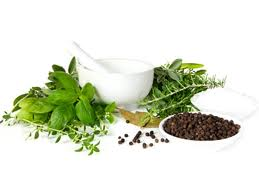 Ayurveda is based on the understanding that the universe is made up of five elements: Air, Fire, Water, Earth and Ether (space). These elements are represented in the human body by three “doshas” or energies. They are Vata, Pitta and Kapha, and are responsible for the characteristics of our mind and body. When any of the doshas accumulate in the body, or get out of balance, the body also loses its balance. Each individual has a distinct proportion of these three forces that shapes their nature, health, and well-being. In Ayurveda, each individual is considered one-of-a-kind, with a unique blueprint for health. Whenever the doshas become imbalanced, Ayurveda suggests specific lifestyle and nutritional guidelines to assist the individual in reducing the dosha that has become excessive
Ayurveda is based on the understanding that the universe is made up of five elements: Air, Fire, Water, Earth and Ether (space). These elements are represented in the human body by three “doshas” or energies. They are Vata, Pitta and Kapha, and are responsible for the characteristics of our mind and body. When any of the doshas accumulate in the body, or get out of balance, the body also loses its balance. Each individual has a distinct proportion of these three forces that shapes their nature, health, and well-being. In Ayurveda, each individual is considered one-of-a-kind, with a unique blueprint for health. Whenever the doshas become imbalanced, Ayurveda suggests specific lifestyle and nutritional guidelines to assist the individual in reducing the dosha that has become excessive
The herbs commonly used in the manufacture of Ayurvedic medicine are highly nutritive with lot of healing properties. Today, Ayurveda and its herbal treatment is actively encouraged as an inexpensive alternative to drugs.
Ayurvedic medicines prepared from the medicines are said to have no side effects. Each herb is unique in its medicinal properties with a good aroma and flavour. It acts as a perfect mechanism in bringing a balanced harmony between the mind and spirit. When compared to other synthetic drugs ayurvedic herbal medicines do not cause any side effects. It works effectively fighting against various infections and diseases and thereby gaining quick recovery.
Ayurvedic science works for a good genetically determined characteristics of both the external and internal features rather than simply focusing on curing a disease. Ayurvedic herbal medicines calls for an internal harmony of various body parts as well as achieving body’s harmony with the surrounding nature and environment. They rejuvenate the whole system rather than the focus being concentrated towards a specific organ of the body.
Ayurvedic treatment mainly consists of essence of fruits, vegetables, spices and natural herbs which helps in curing diseases without having any side effects on the patient’s body. Though it is not the fastest treatment but surely the most effective one.
What effect do Ayurveda treatments have?
- more vitality
- increase of immune system
- prevention of diseases
- healthy sleep
- stimulation of the senses
- strengthening of organs
- regeneration of cells
- rejuvenation and slowdown of the ageing process
- achievement of inner harmony, peace and balance
- increase of optimism, self assurance and enjoying life.
Ayurveda aims at finding the root of a disease and then eradicating it completely from the patient. The philosophy of Ayurveda is to prevent human beings from unnecessary sufferings and to give them a long and healthy life. Ayurvedic treatment consists of natural herbs and is based on direct sense perception, logical inference and hearing from realized souls and saints.
What symptoms are relieved by undergoing Ayurveda treatments?
- burn-out
- high blood pressure
- heart/circulation problems
- allergies
- asthma
- rheumatism
- neurological diseases
- back pain
- skin diseases
- metabolic disorders
- migraine
- insomnia
- exposure through harmful substances
Ayurveda is well aware of the system of body and instead of suppressing it, it approaches directly to the origin and cures the disturbing element. This methodology minimizes the chances of side effects, giving the patient permanent relief from the disease. Ayurveda not only deals with the treatment but also teaches us the style of proper living i.e. a healthy and prosperous life.
CORE PRINCIPLES OF AYURVEDA
September 13, 2012 by admin
Filed under An Introduction to Ayurveda
Ayurveda is the ancient Indian system of natural and holistic medicine. In Sanskrit, Ayurveda means “the science of life” .While allopathic medicine tends to focus on the management of disease, Ayurveda bestows us with the knowledge of how to prevent disease and how to eliminate its root cause if it does occur.
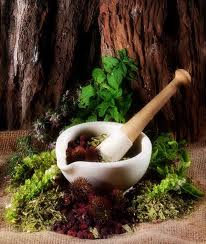 The aim of Ayurveda is to prevent illness and enhance wellness.
The aim of Ayurveda is to prevent illness and enhance wellness.
The knowledge of Ayurveda was passed orally through a lineage of sages in India until it was collated into text more than five thousand years ago. The oldest known texts on Ayurveda are the Charaka Samhita, Sushruta Samhita, and the Ashtanga Hrudaya. These texts detail the affect that the five elements found in the cosmic system – Space, air, earth, water and fire – have on our individual system, and expound on the importance of keeping these elements balanced for a healthy and happy life.
According to Ayurveda, each person will be influenced by certain elements more than others. This is because of their prakriti, or natural constitution. Ayurveda categorizes the different constitutions into three different doshas:
- Vata dosha, in which the air and space elements dominate
- Pitta dosha, in which the fire and water elements dominate
- Kapha dosha, in which the earth and water elements dominate
The dosha affects not just the shape of one’s body but also bodily tendencies (like food preferences and digestion), and the temperament of one’s mind and emotions. For example, the earth element in people with Kapha dosha is evident in their solid, sturdy body type, their tendency for slower digestion, their strong memory, and their emotional steadiness.
Most people’s prakriti is made up of a combination of two doshas. For example, people who are “Pitta Kapha” will have the tendencies of both Pitta dosha and Kapha dosha with Pitta dominating.
By understanding the qualities of our natural constitution we are better able to do what is needed to keep ourselves in balance.
if we are experiencing disease, it means there is an imbalance in our doshas; bringing our system back into balance is the key to the cure. Ayurveda has an effective tool for the diagnosis of disease called nadi pareeksha, or pulse diagnosis. By placing their finger on your wrist, an Ayurvedic doctor can easily detect the imbalances in the body and prescribe an effective treatment.
Treatments usually come in one of two forms:
1) Panchakarma, a 5- pronged body purification program
If toxins in the body are abundant, then a cleansing process known as panchakarma is recommended to purge these unwanted toxins. This fivefold purification therapy is a classical form of treatment in ayurveda. These specialized procedures consist of the following:
- Therapeutic vomiting or emesis (Vaman)
- Purgation (Virechan)
- Enema (Basti)
- Elimination of toxins through the nose (Nasya)
- Bloodletting or detoxification of the blood (Rakta moksha)
2) Herbal medicines to balance the body
Ayurveda places great importance on one’s pathya, or lifestyle (eating habits and daily routine). Ayurveda also provides guidance on how to adjust our lifestyle based on the change of seasons
Holistic Health
Ayurveda`s focus on an individual`s holistic health rather than merely the physical body, is the most beneficial aspect of ayurvedic medicine. It works on the principle that a perfect health condition is achievable through the emotional integration in a person. Ayurveda provides us with a unique physical purification method called panchakarma and various ayurvedic herbal health remedies for mental and spiritual well-being.
A healthy person, as defined in Sushrut Samhita, one of the primary works on Ayurveda, is “he whose doshas are in balance, appetite is good, all tissues of the body and all natural urges are functioning properly, and whose mind, body and spirit are cheerful…”
The ultimate goal of ayurveda is to create a state of holistic health for the individual, to create, consequently, a healthy society and environment with its herbal health remedies. To attain this state ayurveda believes one`s life must move in harmony with nature`s rhythms and its laws. Because, ayurvedic medicine recognizes the human body is part of nature. The five great elements of the universe forms the three doshas of the human body, and a balance among the three doshas is necessary for the perfect working of the whole mechanism of body, mind and soul.
These holistic health benefits of ayurveda includes the physical, mental as well as the spiritual aspects of a person.
Physical Benefits
Noninvasive diagnostic ayurvedic treatments are beneficial for chronic patients. Ayurvedic medicine resorts to outward diagnosis of symptoms by studying a patients` habits -diet and daily life, pulse. Difficult diseases are managed effectively by these diagnostic methods.
Detoxification methods of ayurveda like panchakarma and other herbal health remedies, when applied wholly or singly, make the body more responsive to medicines and treatment. It hastens the healing process.
Various yogasanas prescribed by ayurveda help prevent the diseases from occurring and accumulating. Yogasanas achieve the twin purpose of strengthening body-parts such as bones, muscle and vital organs like heart, liver, stomach, intestine as well as keeping our blood circulation and psychological conditions strong and flexible.
Most importantly, a correct diet according to one`s dosha type, and well-regulated life (dinacharya) helps strengthen one`s natural immune system.
Psychological Benefits
Perhaps ayurveda is the first such medical systems who recognizes that all diseases are but the direct manifestation of one`s mental conditions. It says human mind consists three states or trigunas -sattva, rajas and tamas. Any disturbances in the equilibrium of the tri-gunas, manifest in physical illness according to the intensity or nature of the disturbances. In fact, the condition of body and mind are integral to the overall health of an individual.
When the mind is stressed the stress hormone cortisone is released by adrenal glands. The level of hormone released affects the total volume of the brain that is involved in memory forming, organizing, and storing. Stress also affects all our decision-making activities in every field of life.
Ayurveda stresses on four principles to maintain the balance and equanimity of the mind .They are:
- regulation in ahara (food habit),
- vihara (activities),
- nidra (sleeping habit) and
- maithuna (sexual habit)
The guidelines for an intelligently regulated diet and daily routine are now, accepted techniques for stress management.
Ayurvedic massages, inhalation of herbal (Aromatherapy) preparations, panchakarma (nasya) besides the much-tested yogasanas and meditation leave a calming effect on the nerves.
Spiritual Benefits
The balance of tri-doshas and tri-gunas is imperative in this regard, for the individual needs to remain in balance within itself and in harmony outside with the nature. Various advanced ayurvedic treatments were born out of a necessity to keep the mind and body in perfect shapes to pursue the path of self-realization. Each individual is believed to possess undefined measures of creative capability, which, ideally, need to be realized. To achieve this, ayurveda emphasizes that the individual has to experience its oneness with the universe.
The treatment methods, diet and lifestyle regimen in ayurveda are carefully planned to heal the body as well as enrich the mind and the soul of each different individual. So that each can improve from their own levels to the higher goal of realizing the full self-potential. It was with ayurveda that the unique longevity and rejuvenating method of rasayana was born for mankind to progress in the path of spirituality.
HISTORY OF AYURVEDA
September 13, 2012 by admin
Filed under An Introduction to Ayurveda
Ayurveda is a holistic system of medical science that integrates the mind, body and spirit .and is the oldest healing science which is almost 5000 years old. Ayurveda contains two Sanskrit words: Ayu which means life or lifespan and Veda meaning knowledge (The Science of Life). This system of medicine was shaped in the ancient lands of India
The true history of Ayurveda starts from the time of the Holy books, the Vedas. Ancient mythology contends that the concept and essence of Ayurveda was revealed by the creator of the world himself – Lord Brahma.
Before the advent of writing, the ancient wisdom of this healing system was a part of the spiritual tradition of the Sanatana Dharma (Universal Religion), or Vedic Religion. Veda Vyasa, the famous sage, shaktavesha avatar of Vishnu, put into writing the complete knowledge of Ayurveda, along with the more directly spiritual insights of self realization into a body of scriptural literature called the Vedas and the Vedic literatures.
There are four Vedas – books of spirituality which date back to about 5000 years. They preach the philosophy of life . They are:
- Rigveda
- Yajurveda
- Samaveda
- Atharvaveda
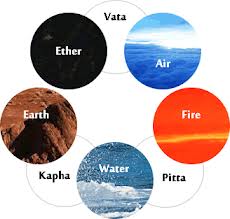 The Rig Veda, is a compilation of verse on the nature of existence, is the oldest surviving book of any Indo-European language (3000 B.C.). The Rig Veda refers to the cosmology known as Sankhya which lies at the base of both Ayurveda and Yoga, contains verses on the nature of health and disease, pathogenesis and principles of treatment. There are discussions in the Rig Veda of the three dhosas: Vayu. Pitta and Kapha, and the use of herbs to heal the diseases of the mind and body and to foster longevity.
The Rig Veda, is a compilation of verse on the nature of existence, is the oldest surviving book of any Indo-European language (3000 B.C.). The Rig Veda refers to the cosmology known as Sankhya which lies at the base of both Ayurveda and Yoga, contains verses on the nature of health and disease, pathogenesis and principles of treatment. There are discussions in the Rig Veda of the three dhosas: Vayu. Pitta and Kapha, and the use of herbs to heal the diseases of the mind and body and to foster longevity.
The Atharva Veda lists the eight divisions of Ayurveda: Internal Medicine, Surgery of Head and Neck, Opthamology and Otorinolaryngology, Surgery, Toxicology, Psychiatry, Pediatrics, Gerontology or Science of Rejuvenation, and the Science of Fertility.
Ayurveda is the most ancient science of healing which enhances longevity. It has influenced many of the older traditional methods of healing including Tibetan, Chinese and Greek medicine. Hence, Ayurveda is considered by many as the ‘mother of healing.’
The hymns, the mantras and the medical information contained in the Vedas were contributions of Rishis and munis or sages, over a period of time. Many of these sages were learned saints who devoted their life to understanding the world.
The Vedic Sages took the passages from the Vedic Scriptures relating to Ayurveda and compiled separate books dealing only with Ayurveda. One of these books, called the Atreya Samhita is the oldest medical book in the world! The Vedic Brahmanas were not only priests performing religious rites and ceremonies, they also became Vaidyas (physicians of Ayurveda). The sage-physician-surgeons of the time were the same sages or seers, deeply devoted holy people, who saw health as an integral part of spiritual life. It is said that they received their training of Ayurveda through direct cognition during meditation. In other words, the knowledge of the use of various methods of healing, prevention, longevity and surgery came through Divine revelation; there was no guessing or testing and harming animals. These revelations were transcribed from the oral tradition into book form, interspersed with the other aspects of life and spirituality.
What is fascinating is Ayurveda’s use of herbs, foods, aromas, gems, colors, yoga, mantras, lifestyle and surgery. Consequently Ayurveda grew into a respected and widely used system of healing in India. Around 1500 B.C., Ayurveda was delineated into eight specific branches of medicine.
There were two main schools of Ayurveda at that time. Atreya ( the school of physicians) and Dhanvantari ( the school of surgeons) . These two schools made Ayurveda a more scientifically verifiable and classifiable medical system.
The practical tenets of Ayurveda are divided into eight sections or branches. These sections include:
- Internal medicine,
- Surgery,
- Organic medicine,
- Pediatrics,
- Toxicology,
- Rejuvenating remedy,
- Aphrodisiac remedies and
- Spiritual healing.
These eight sections are called “Astanga Ayurveda“.
People from numerous countries came to Indian Ayurvedic schools to learn about this world medicine and the religious scriptures it sprang from. Learned men from China, Tibet, the Greeks, Romans, Egyptians, Afghanistanis, Persians, and more traveled to learn the complete wisdom and bring it back to their own countries. Ayurvedic texts were translated in Arabic and under physicians such as Avicenna and Razi Sempion, both of whom quoted Indian Ayurvedic texts, established Islamic medicine. This style became popular in Europe, and helped to form the foundation of the European tradition in medicine.
In 16th Century Europe, Paracelsus, who is known as the father of modem Western medicine, practiced and propagated a system of medicine which borrowed heavily from Ayurveda.
There are two main re-organizers of Ayurveda whose works are still existing in tact today – Charak and Sushrut. The third major treatise is called the Ashtanga Hridaya, which is a concise version of the works of Charak and Sushrut. Thus the three main Ayurvedic texts that are still used today are the Charak Samhita (compilation of the oldest book Atreya Samhita), Sushrut Samhita and the Ashtangha Hridaya Samhita. These books are believed to be over 1,200 years old. It is because these texts still contain the original and complete knowledge of this Ayurvedic world medicine, that Ayurveda is known today as the only complete medical system still in existence. Other forms of medicine from various cultures, although parallel are missing parts of the original information.
Decline and revival of Ayurveda
For a few centuries, the tradition of Ayurveda was dimmed due to the natural and human calamities and also by the invasion of foreign cultures into India. The sacred texts were either destroyed or stolen. However there were many ‘Vaidyas’ or doctors in India who managed to preserve some of the knowledge available in these Holy Scriptures. Divine plants that sustain long life and good health are now being rediscovered. Many renowned families of Vaidyas, who are specialized in certain branches of Ayurveda, have started functioning again in India. The Indian government began systematic research on Ayurvedic practices in 1969, and that work continues.
Before Ayurveda began its recent renewal in the West, it went through a period of decline in India when Western medical education became dominant during the era of British rule.
Ayurveda became a second-class option used primarily by traditional spiritual practitioners and the poor. After India gained its independence in 1947, Ayurveda gained ground and new schools began to be established. Today more than five hundred Ayurvedic companies and hospitals have opened in the last ten years, and several hundred schools have been established. Although Ayurveda remains a secondary system of health care in India, the trend toward complementary care is emerging, and Western and Ayurvedic physicians often work side by side.
Interest in Ayurveda in the West began in the mid 1970’s as Ayurvedic teachers from India began visiting the United States and Europe. By sharing their knowledge they have inspired a vast movement toward body-mind-spirit medicine. Today Ayurvedic colleges are opening throughout Europe, Australia, and the United States.
WHAT IS AYURVEDA
September 13, 2012 by admin
Filed under An Introduction to Ayurveda
Ayurveda is a science of life based on Vedas, the Hindu books of knowledge and wisdom. In Sanskrit , Ayurveda means “ Knowledge of life” . Ayurveda is a healthy-lifestyle system that people in India have used for more than 5,000 years. Ayurveda is perhaps the most complete system of living, embracing not only medicine, but also philosophy, psychology, lifestyle and health.
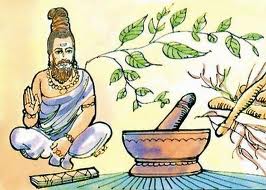
Ayurvedic medicine is holistic, which means viewing the body and mind as a whole.
According to Ayurveda, the five elements of nature (space, air, fire, water, earth) , also known as Panchabhutas combine in the body as three components (doshas) known as Vatta, Pitta and Kapha. These doshas ( life forces) relate closely to the basic elements of nature and to specific functions of the body. A balance of these doshas is thought to be required for optimal health.
Vatta is represented by Air and Space. It is considered the most powerful dosha because it controls very basic body processes such as cell division, the heart, breathing, muscle and joint movement ,discharge of waste and the mind . Vatta also controls anxiety, fear, pain and other functions of the nervous system.
Pitta is represented by Fire and Water. Pitta, which is thought to control such bodily functions as digestion, hormones, metabolism, intelligence and skin color. Pitta controls the emotions of anger, hate and jealousy.
Kapha is represented by Earth and Water . The physical structure of the body, growth of the body and the immune system are governed by Kapha. Emotional responses thought to be controlled by Kapha include calmness, forgiveness, love and greed.
The doshas, which are determined at the time of conception, also is reflected in an individual’s physical makeup and personality. A person with a Vatta makeup tends to have a small, thin build. The Pitta body style is more of a medium, muscular build. The Kapha appearance is usually bigger and well-developed. Most people are considered to have a combination of doshas, with one type of dosha usually being predominant.
The natural constitution is called the prakriti. The prakriti is a person’s unique combination of physical and psychological characteristics and the way the body functions to maintain health. It is influenced by such factors as digestion and how the body deals with waste products. The prakriti is believed to be unchanged over a person’s lifetime.
The most basic idea of Ayurveda is the concept of balance. We are healthy and happy when our doshas and our gunas are properly balanced. Most disease results from an imbalance of our doshas. To heal the disease, the Ayurvedic practitioner attempts through various treatments , dietary changes and exercise to restore the balance.
According to the ayurvedic philosophy, you can also use yoga, meditation or counseling to treat disease.The balanced body then heals itself.
How is Ayurveda used ?
People use ayurvedic practices to maintain health, reduce stress and improve flexibility, strength, and stamina. Researchers have found that yoga and meditation can be effective ways to treat diseases such as asthma, high blood pressure and arthritis.
Ayurveda stresses proper diet for maintaining good health and treating disease. Ayurvedic medicines are prescribed based on the person’s dosha type.
Researchers are studying the effects of ayurvedic herbal medicines on various long-term (chronic) illnesses.
Is it safe to use Ayurveda and follow its practices?
Ayurvedic practices such as yoga and meditation can be safe ways to promote health. If you have a long-term illness, you may be able to combine ayurveda with conventional medical treatment including counseling.
Ayurvedic herbal medicines, like conventional medicines, may cause side effects, trigger allergic reactions, or interact with other medicines or herbs you are taking. Some ayurvedic medicines may contain high levels of heavy metals.
A study in the recent times has indicated the presence of potentially harmful levels of lead and other heavy metals.
Always tell your doctor all your ailments and also the medicines you have been taking during that duration. Mention about all herbs and natural supplements. If you have already been on the course of ayurvedic medicine products, ask your doctor about screening for heavy metals.
To summarize, Ayurveda is a system that uses the body’s own defenses to restore and maintain health and happiness







